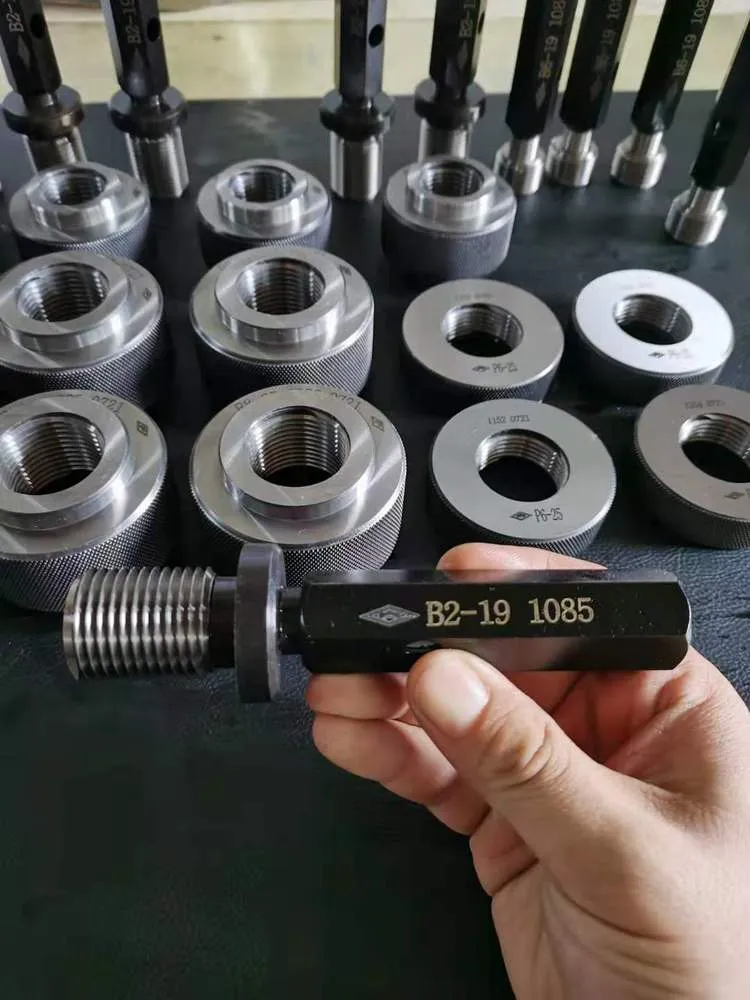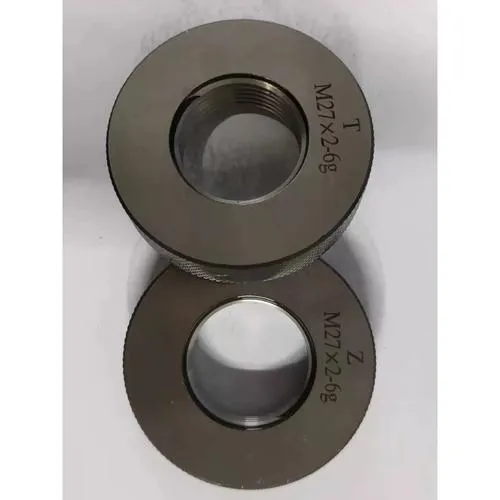Jun . 23, 2025 09:42 فهرست ڏانھن واپس
Snap Gauge Critical Tool for Industrial Precision Measurement
In the domain of industrial metrology and manufacturing quality assurance, انگن اکرن جي ماپ and سنيپ گيج represent cornerstone instruments for achieving and verifying dimensional precision. These tools embody the technical rigor required to meet international standards where tolerance compliance is non-negotiable. This scholarly discourse examines their operational principles, engineering applications, and scientific foundations, underscoring their indispensable role in modern industrial ecosystems.

The Mechanical Design and Functional Utility of Ring Thread Gauges
Ring thread gauges are engineered to evaluate the geometric integrity of external threads through comparative measurement. Constructed from high-grade alloy steels with high surface hardness, these gauges feature precision-machined internal threads that conform to standardized profiles.Critical to their utility is the principle that gauges verify both the maximum material condition and the virtual condition of threads. In aerospace fastener production, for example, انگن اکرن جي ماپ ensure that alloy bolts adhere to strict tolerances, preventing catastrophic failures due to thread misalignment. Metrological best practices dictate periodic calibration against master thread rings traceable to national standards, ensuring measurement uncertainty remains within acceptable limits for nominal diameters.
Telescoping Bore Gauge A Kinematic Solution for Complex Internal Geometry Measurement
The telescoping بور گيج addresses the metrological challenge of measuring inaccessible internal diameters through a kinematic linkage mechanism. Comprising extendable probes with spherical contact tips and a central beam, this device operates on the principle of three-point measurement, where fixed anvils and an adjustable probe triangulate the bore's diameter. When paired with a dial indicator or electronic comparator, it achieves high measurement resolutions, as outlined in standards for geometric product specifications.
Its utility is particularly pronounced in automotive cylinder block inspection, where deep bores necessitate tools with minimal form error. The gauge's articulated design mitigates errors by ensuring axial alignment with the bore axis, a critical factor in maintaining measurement validity. Research in precision engineering has demonstrated that proper probe lubrication reduces frictional forces, enhancing repeatability across controlled temperature ranges.

Bore Gauge Micrometer Nanometric Precision in Dimensional Metrology
The bore gauge micrometer represents the pinnacle of precision in internal diameter measurement, combining the screw-thread mechanism of a micrometer with a dual-anvil design optimized for bore inspection. Equipped with a thimble graduated in fine increments and a carbide-tipped spindle, this instrument achieves exceptional measurement uncertainty when used in controlled environments, as per relevant standards.
Its application in medical device manufacturing is transformative, enabling verification of component bores that must adhere to extremely tight tolerances to ensure proper functionality. The instrument's thermal stability, achieved through specialized alloy components, minimizes errors induced by ambient temperature fluctuations. Metrological protocols emphasize the use of multi-point averaging around the bore to compensate for ovality, a practice codified in established metrological guidelines.
Snap Gauge A Statistical Process Control Enabler for High-Volume Production
Designed for attribute sampling in statistical process control, the سنيپ گيج facilitates rapid conformity assessment of cylindrical components through fixed-limit gauging. Constructed with hardened steel anvils set to specified tolerance limits, it operates on the principle of gauge block comparability, ensuring consistency with recognized standards. The "snap" action defined by a controlled force threshold for engagement—eliminates subjective interpretation, making it ideal for automated inspection lines.
In automotive power train production, snap gauges validate the diameter of critical components to within strict tolerances, supporting efficient quality control objectives by reducing inspection cycle times. Ergonomic designs with anti-slip grips and balanced leverage systems enhance operator efficiency, while durable surface treatments resist wear from extensive measurement cycles. Calibration protocols require periodic verification against master standards traceable to national measurement institutes, ensuring gauge reliability.

Ring Thread Gauges FAQs
How do ring thread gauges ensure compliance in aerospace fastener manufacturing?
Ring thread gauges play a pivotal role in aerospace fastener manufacturing by verifying the geometric integrity of external threads on critical components. These gauges methodology to ensure that alloy bolts and screws adhere to stringent tolerances, preventing assembly failures caused by thread misalignment. By conforming to standardized thread profiles and undergoing regular calibration, انگن اکرن جي ماپ maintain the precision required for aerospace applications, where component reliability is non-negotiable.
How does kinematic design enhance the accuracy of telescoping bore gauges?
The three-point kinematic design of telescoping bore gauges constrains rotational freedom, ensuring the measured diameter aligns with the bore's principal axis. This reduces the influence of form errors, as demonstrated in studies published in leading metrological journals.
What materials science considerations optimize bore gauge micrometer performance?
Bore gauge micrometers utilize specialized alloys for thermal stability and wear-resistant materials for contact tips. These materials ensure dimensional stability across operational temperatures and maintain measurement accuracy over extended service life.
How do snap gauges contribute to statistical process control methodologies?
Snap gauges enable attribute data collection, which are critical for constructing control charts in statistical process control. Their binary output supports real-time process monitoring, facilitating timely corrective actions to maintain high process capability.
What is the metrological significance of calibration intervals for precision gauges?
Calibration intervals balance measurement risk and operational cost. For انگن اکرن جي ماپ and snap gauges, regular calibration suffices under normal conditions, while telescoping بور گيج in high-precision environments may require more frequent checks to mitigate drift and environmental influences.
The instruments discussed herein انگن اکرن جي ماپ and سنيپ گيج—embody the intersection of mechanical engineering, metrology, and materials science. Their design adheres to fundamental geometric principles, standardized protocols, and empirical best practices, enabling industries to achieve precision levels that underpin modern technological advancement. As manufacturing tolerances continue to tighten, driven by trends like miniaturization, the scientific rigor inherent in these tools remains essential for maintaining global quality benchmarks.
This academic exploration dissects two critical precision measuring tools in industrial settings. Ring thread gauges ensure thread conformity through comparative assessment, and snap gauges enable efficient quality control in high-volume production. Collectively, these tools exemplify the technical excellence required to meet international standards, underscoring their pivotal role in dimensional accuracy and process reliability.
-
Why Metric Trapezoidal Thread is Ideal for Precision Motion ControlخبرونAug.05,2025
-
The Unique Properties of a Block of Granite for Industrial UseخبرونAug.05,2025
-
The Role of Flanged Y Strainers in Preventing Pipeline ClogsخبرونAug.05,2025
-
The Importance of Regular Calibration for Master Ring GagesخبرونAug.05,2025
-
How a Cast Iron Surface Table Enhances Accuracy in ManufacturingخبرونAug.05,2025
-
Comparing Different Check Valve Types for Optimal Flow ControlخبرونAug.05,2025
لاڳاپيل پروڊڪٽس









